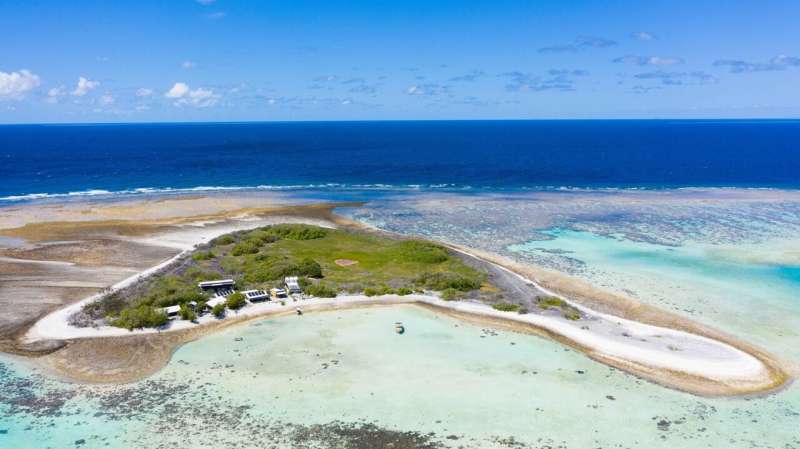This article has been reviewed according to Science X's editorial process and policies. Editors have highlighted the following attributes while ensuring the content's credibility:
fact-checked
peer-reviewed publication
trusted source
proofread
How did the early Great Barrier Reef manage rapid environmental change?

As the modern Great Barrier Reef emerged after the last ice age, it had to cope with multiple environmental stresses—rising sea levels, increased sediment from a flooding coastline, ocean turbulence and likely warming oceans.
It has been speculated, with little direct data, that these factors inhibited the emergence of the modern Great Barrier Reef. Now, for the first time, geoscientists have managed to determine how these factors, particularly water quality, contributed to the reef's development between about 8,000 and 6,000 years ago.
Their findings, published in Quaternary Science Reviews, confirm a long-standing idea that elevated nutrient levels impacted reef growth. In modern coral reefs, nutrient-rich waters have been observed to favor macro algae, which can outcompete corals, as well as cause increases in bio-eroders that can weaken coral skeletons.
As the modern reef emerged thousands of years ago, scientists have found that these factors led to the establishment of slower-growing and more sediment-tolerant coral communities in deeper water, rather than the more familiar shallow and clear-water species that emerged later.
Senior author Professor Jody Webster from the School of Geosciences at the University of Sydney said, "This study has given us an historical picture of how the emerging modern reef responded to huge environmental stress.
"We get the picture of a dynamic ecosystem dealing with adverse environmental conditions during the early Holocene as sea levels rose and inundated the previously exposed shelf."
Lead author Dr. Kelsey Sanborn from the Geocoastal Research Group in the School of Geosciences said, "This work demonstrates that reef communities were able to grow despite higher sediment and nutrient input to the reef. However, the types of corals that grew were more like today's inshore, turbid reefs, as opposed to the shallow and clear-water communities common on One Tree Reef today.
"This provides evidence to understand early Holocene water quality on the southern Great Barrier Reef and demonstrates the capacity of the reef to grow under conditions that would typically be considered unsuitable."
The research was conducted at the University of Sydney research station at One Tree Island, in collaboration with the University of Queensland, Southern Cross University and the University of Tokyo. Using a jack-up drill rig, geoscientists drilled into the reef, extracting cores from 12 sites. The extracted cores provided fossilized records of corals for examination.
Professor Webster said, "Our research establishes the first geochemical record of skeletal-bound organic nitrogen from precisely dated cores from this time. We also measured the ratio of barium to calcium in the corals.
"The elevated nitrogen and barium-to-calcium values point to increased sediment and nutrient levels on the reef."
The team compared their results with established records of rare earth elements and yttrium as proxies for land-based sediment and nutrient concentrations on the reef.
Dr. Sanborn said, "Our study provides important evidence of how the modern Great Barrier Reef emerged and withstood environmental stresses.
"Over this period of a thousand years, sea levels rose about 10 meters. Had sea levels continued to rise at this rate, we can't be sure if the reef would have survived.
"What we do see is that only some of the more tolerant reef communities were able to continue growing slowly during this time until ocean levels and other factors stabilized."
Professor Webster said, "The Great Barrier Reef now faces a new set of environmental stressors, many of them due to human, industrial and agricultural activity. Our work looking at the history of the reef can assist in understanding how coral communities might respond to some of that stress today."
More information: Kelsey L. Sanborn et al, The impact of elevated nutrients on the Holocene evolution of the Great Barrier Reef, Quaternary Science Reviews (2024). DOI: 10.1016/j.quascirev.2024.108636
Journal information: Quaternary Science Reviews
Provided by University of Sydney





















